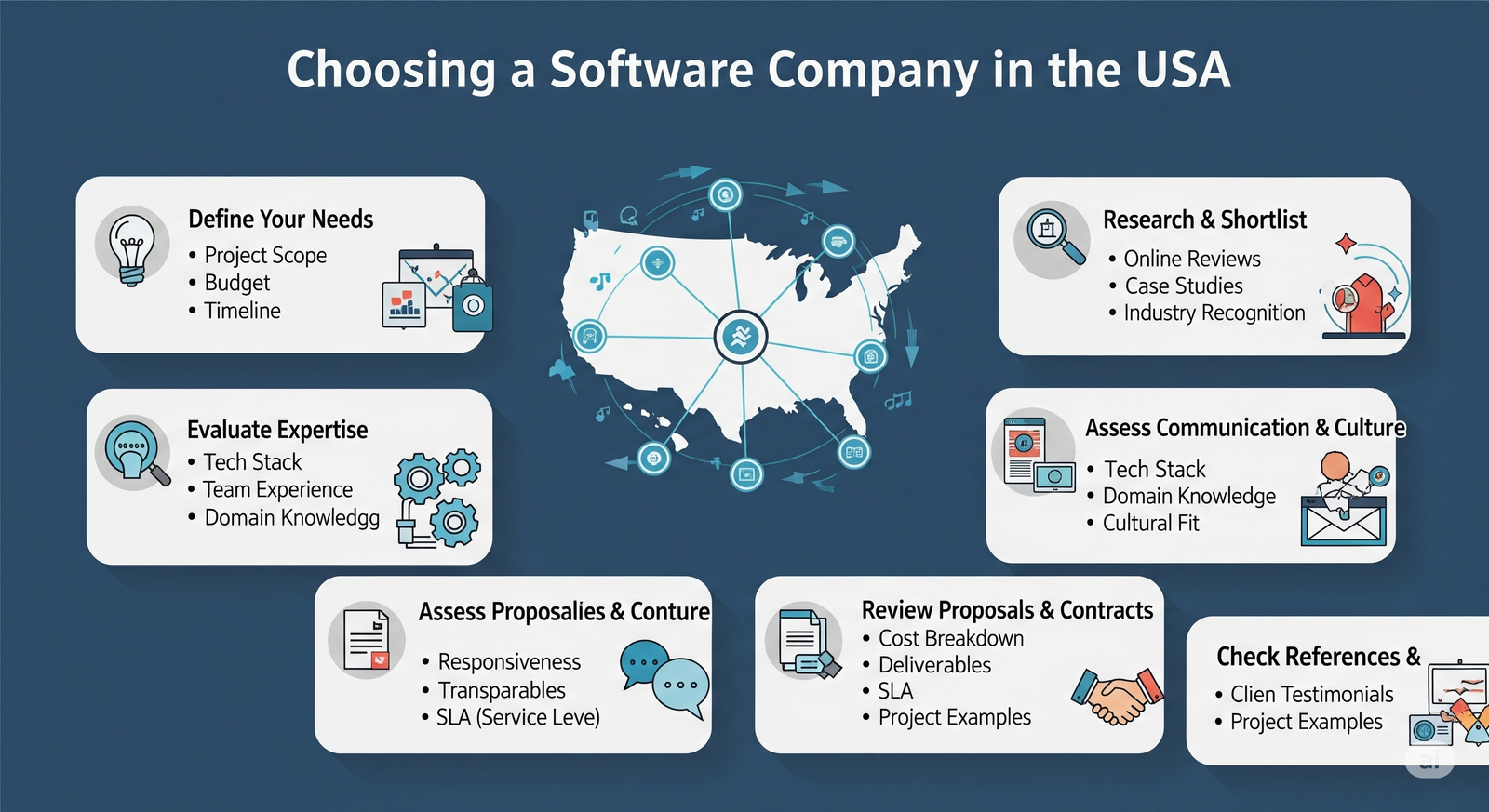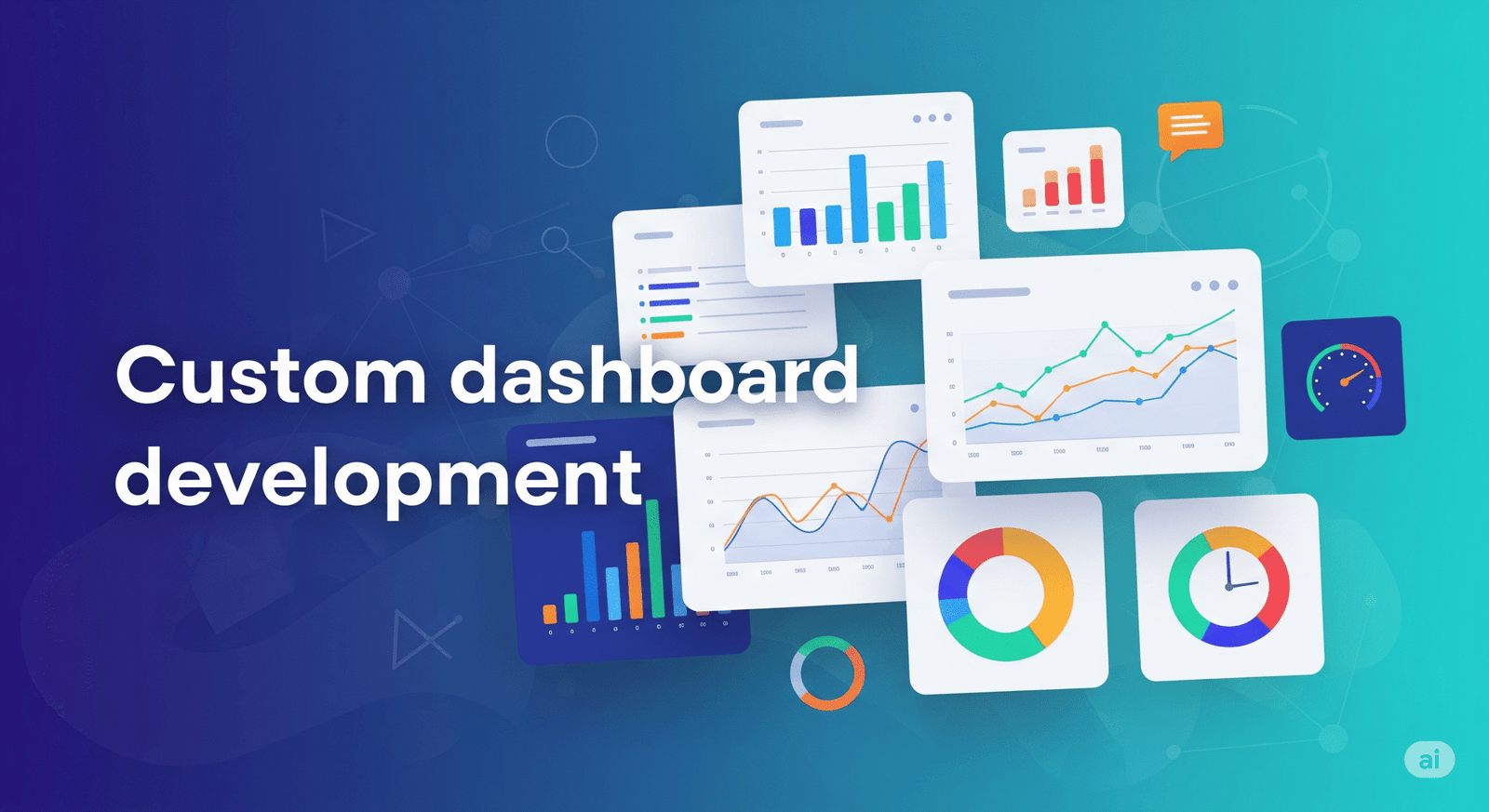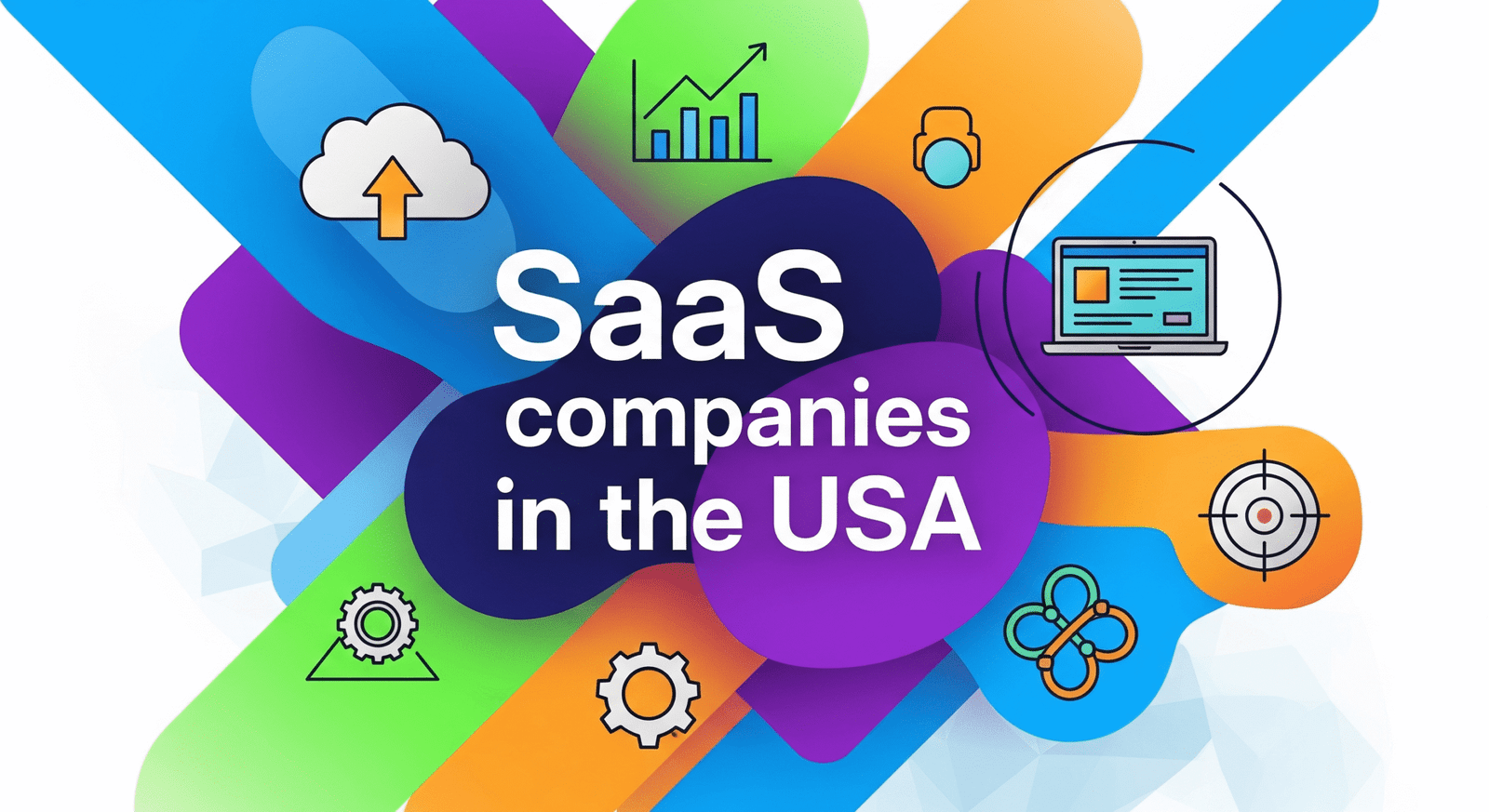Introduction:
Picture this: your sales team in New York celebrates a landmark deal, but the warehouse in Texas operates on yesterday’s data, leading to a costly fulfillment error. Your marketing department launches a brilliant, targeted campaign, but the CRM doesn’t talk to the accounting software, so customer lifetime value is a mystery buried in spreadsheets. Your financial controller spends days, not minutes, stitching together reports, forcing leadership to steer the company looking in the rearview mirror.
If this chaos feels familiar, you have encountered the operational ceiling—a point where disconnected systems and generic software actively impede growth instead of enabling it. For the digital marketer craving a 360-degree customer view, the entrepreneur scaling a startup, or the operations director of a established manufacturing firm, this ceiling is both frustrating and expensive. This is where the transformative power of custom ERP development in USA becomes not just a IT project, but a core business strategy.
1. Demystifying Custom ERP: Beyond the Off-The-Shelf Box
Before we dive into the “custom” aspect, let’s solidify what an ERP is. ERP, or Enterprise Resource Planning, is a category of software that organizations use to manage and integrate the essential parts of their businesses. A complete ERP suite also includes Enterprise Performance Management, software that helps plan, budget, predict, and report on an organization’s financial results.
An ERP system integrates a multitude of business processes—from finance, HR, manufacturing, and supply chain to services, procurement, and beyond—into a single, coherent system. The primary goal is to facilitate the flow of data between all business functions within an organization and manage connections to outside stakeholders.
Now, let’s talk about custom ERP development. This is a fundamentally different approach from buying a pre-packaged solution like SAP S/4HANA, Oracle NetSuite, or Microsoft Dynamics 365.
- Off-the-Shelf ERP: You buy a powerful, feature-rich system. Then, you must change your business processes to fit the software’s predefined workflows. It’s a square-peg, round-hole scenario that often leads to costly customization, user frustration, and features you pay for but never use.
- Custom ERP Development: The process is reversed. A team of analysts and developers works with you to understand your unique business DNA. They then design, architect, and build a system from the ground up that fits your exact workflows, industry-specific requirements, and strategic vision. It’s tailoring a suit versus buying one off the rack.
- Primary Keywords: Custom ERP development, custom ERP system, ERP software development USA, bespoke ERP solutions.
- LSI Keywords: tailored business software, enterprise resource planning system, proprietary ERP software, build ERP from scratch, custom business process management.
2. The Anatomy of a World-Class Custom ERP System: Core Modules and Beyond
A robust custom ERP is built as a series of integrated modules. The beauty of custom development is that you only build and pay for the modules you need, and you can design them to be uniquely powerful.
Core Modules (The Essentials):
- Finance and Accounting: The general ledger, accounts payable, accounts receivable, fixed assets, cash management, and financial reporting. A custom system can automate complex, company-specific revenue recognition rules or compliance reporting.
- Supply Chain Management (SCM): Inventory management, procurement, order management, and supplier management. For a US-based manufacturer, this could include custom integrations with domestic suppliers for real-time stock levels.
- Human Capital Management (HCM): Payroll, recruiting, benefits administration, time and attendance, and performance management. A custom system can be built to handle unique union rules or complex commission structures for sales teams.
- Customer Relationship Management (CRM): Sales force automation, marketing automation, customer service, and support. This isn’t a separate tool; it’s seamlessly woven into the ERP, giving everyone a unified view of the customer.
Advanced & Industry-Specific Modules (The Competitive Edge):
- E-commerce Integration: Deep, real-time sync between your online store (e.g., Shopify, Magento) and your backend inventory, logistics, and finance systems. This is critical for US retailers.
- Business Intelligence (BI) and Analytics: Custom dashboards and reports that pull data from every module, providing actionable insights specific to your KPIs.
- Project Management: For professional services firms, this module tracks profitability, resource allocation, and project timelines against budgets.
- Industry-Specific Modules: This is where custom ERP shines. Think of:
- Field Service Management for HVAC companies.
- Recipe & Compliance Management for food and beverage producers (with FDA traceability).
- Fleet Management for logistics and transportation companies.
- Construction Management for contractors handling job costing and change orders.
3. The Strategic Imperative: Why US Businesses Are Investing in Custom ERP Development
The decision to build a custom ERP is a strategic one, driven by the need for a sustainable competitive advantage. Here’s why it’s a superior choice for many growing US businesses:
- Perfect Process Alignment: Your software should serve your business, not the other way around. A custom ERP is designed to mirror your exact operational workflows, eliminating cumbersome workarounds and dramatically boosting productivity and user adoption.
- Unmatched Scalability and Flexibility: Your business will change. A custom ERP is built on a modular architecture, meaning you can easily add new features, integrate with new technologies, and scale capacity as you grow. You will never be locked into a version or told a feature you need isn’t on the roadmap.
- Genuine Competitive Differentiation: Your unique processes are your secret sauce. A custom system can automate and optimize these proprietary operations in ways a competitor using generic software cannot, creating a powerful moat around your business.
- Enhanced Data Security and Compliance: With a system built specifically for you, you have granular control over data access, security protocols, and audit trails. This is paramount for US businesses in healthcare (HIPAA), finance (SOX, GDPR), and defense (ITAR).
4. The Custom ERP Development Lifecycle: A Phased and Collaborative Journey
Building a custom ERP is a significant undertaking that follows a structured, collaborative methodology to ensure success.
- Phase 1: Discovery and Strategic Consulting: This is the most critical phase. It’s not about coding; it’s about understanding. Developers act as business consultants, conducting deep-dive workshops with stakeholders from every department to map processes, identify pain points, and define clear, measurable business objectives for the new system.
- Phase 2: Planning and Architectural Blueprinting: A project vision is translated into a technical reality. This phase produces a detailed Software Requirements Specification (SRS) document, selects the appropriate technology stack (e.g., Python/Django, .NET, Java Spring, Node.js), and creates a phased project roadmap with milestones and budgets.
- Phase 3: UI/UX Design and Prototyping: User adoption is critical. UX designers create wireframes and interactive prototypes for key workflows. It ensures the system is intuitive, user-friendly, and meets the needs of the people who will use it daily before a single line of code is written.
- Phase 4: Agile Development and Integration: The build begins using Agile methodology. Project is broken into short “sprints” (usually 2-3 weeks), each delivering a piece of functional software. This allows for continuous testing, review, and feedback, ensuring the project stays on track and aligned with business needs. ERP integration with existing databases and third-party APIs is a core part of this phase.
- Phase 5: Rigorous Quality Assurance (QA) and Testing: The system undergoes relentless testing. This includes unit testing, integration testing, performance/load testing, security penetration testing, and User Acceptance Testing (UAT), where actual end-users validate that the system meets their requirements.
5. Expert Tips for a Flawless Custom ERP Implementation
Navigating a custom ERP project is complex. Heed this advice from veterans who have been through the process:
- Tip #1: Secure Executive Sponsorship and Define ROI. This must be a C-level priority, not just an IT project. From the start, define what success looks like in measurable terms (e.g., “20% reduction in order processing time,” “15% decrease in inventory carrying costs”).
- Tip #2: Choose Your Technology Partner Like a Business Partner. Your choice of a US-based ERP development company is the single most important factor. Look for a partner with:
- Proven experience in your industry.
- A portfolio of successful ERP projects.
- A collaborative consulting approach.
- Transparent communication and a structured process.
- Tip #3: Champion Change Management. People fear change. Involve key users from all departments early in the process (create a “super user” group). Communicate the “why” constantly and invest heavily in training and support to drive adoption.
- Tip #4: Embrace an Agile, MVP-Led Approach. Don’t try to boil the ocean. Define a Minimum Viable Product (MVP) with the core functionalities that deliver the most value. Launch it, get feedback, and then iteratively add features. This reduces risk and gets you to value faster.
- Tip #5: Prioritize Data Quality and Migration. “Garbage in, garbage out.” Start auditing and cleaning your data long before migration begins.
6. Your Turn: Let’s Solve Your Operational Puzzles
The theory is great, but your business is unique. We learn the most from each other’s experiences.
- What is the single biggest operational headache keeping you up at night? Is it inventory inaccuracy, slow financial reporting, or disconnected customer data?
- Have you evaluated off-the-shelf ERP solutions? What were your deal-breakers?
- If you’ve been through an ERP implementation (custom or packaged), what was your biggest lesson learned? What would you do differently?
Share your story, your questions, or your biggest fear about embarking on a custom development journey in the comments below. Let’s start a conversation and build a resource for fellow entrepreneurs and executives.
Conclusion:
In the relentless pursuit of growth and efficiency, data-driven integration is no longer a luxury; it is a necessity for survival and dominance. Off-the-shelf ERP solutions offer a path, but it’s often a path of compromise, forcing your unique business to conform to its limitations.
Custom ERP development in the USA represents a different philosophy. It is a strategic commitment to building the central nervous system of your company—a system that is as agile, innovative, and unique as your business itself. It’s an investment in a asset that streamlines operations today and empowers your strategic vision for tomorrow. It is about taking control of your processes, your data, and ultimately, your destiny in the marketplace.
The question is no longer if you need a integrated system, but what kind of system will truly serve your ambition. Will it be one that defines your limits or one that eliminates them.



